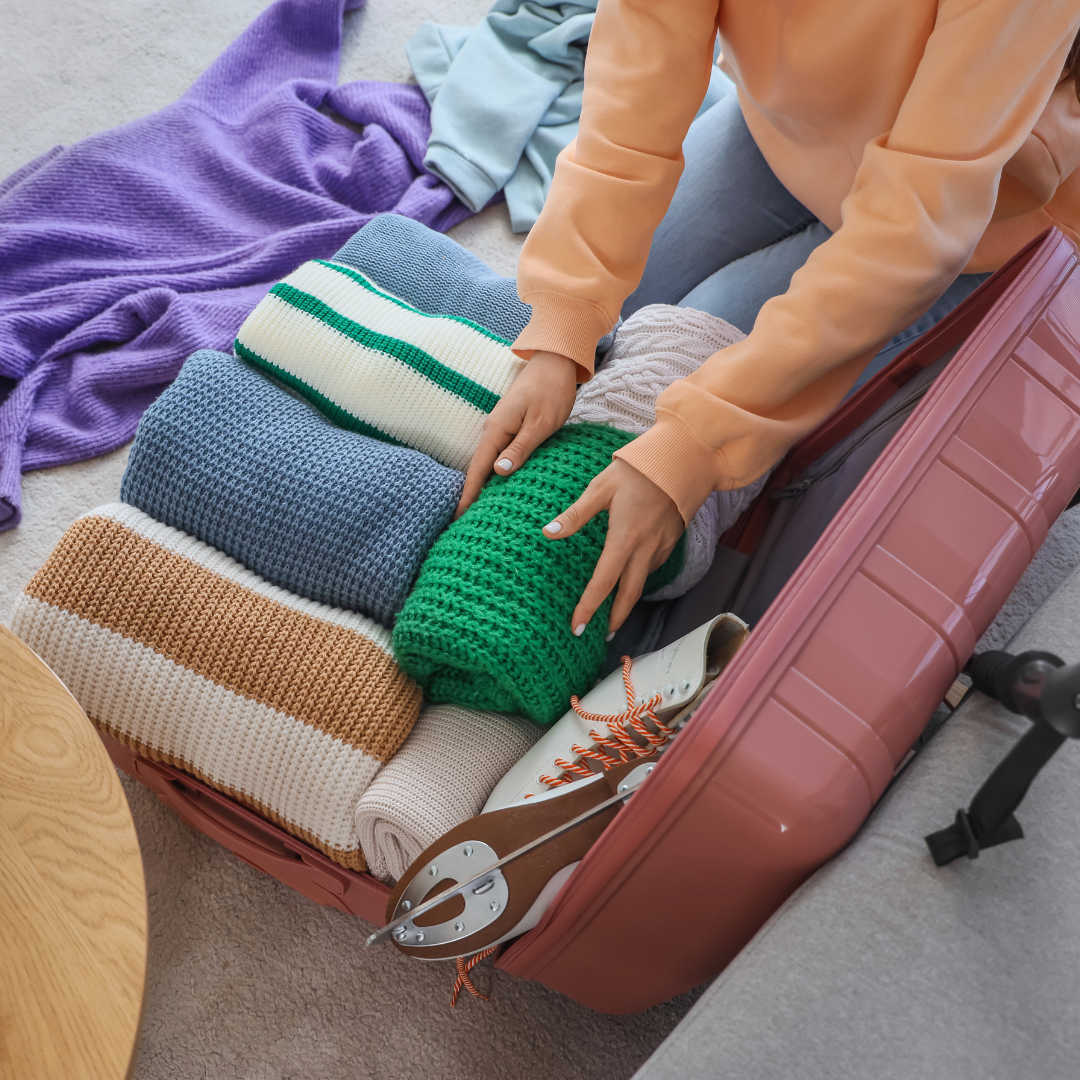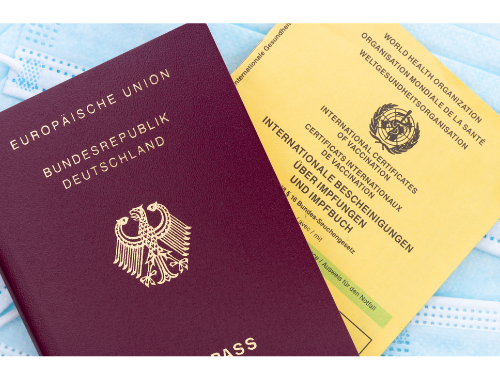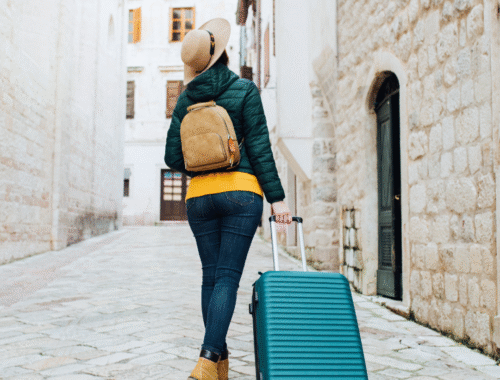
Packing Tips for Winter Travel: Essential Strategies for a Comfortable Journey
Winter travel presents unique challenges that require thoughtful packing strategies. To ensure comfort and preparedness, travellers should focus on layering their clothing, selecting versatile pieces, and not forgetting essential winter gear. Understanding the importance of these elements can significantly enhance the travel experience.
In colder climates, packing bulky items can take up valuable luggage space. Instead, it’s beneficial to choose lightweight and thermal materials that offer warmth without added bulk. This approach allows for easier mobility during adventures while still keeping warmth a priority.
Additionally, packing a few key accessories can make all the difference. Items such as gloves, hats, and scarves are not only practical for warmth but also add a personal touch to winter outfits. With careful planning, travellers can enjoy their winter excursions without the stress of being underprepared.
Essential Winter Packing Principles
Packing for winter travel requires strategic choices to remain warm while considering the limitations of luggage space. Understanding essential principles can streamline the packing process and ensure a comfortable journey.
Packing Light Without Sacrificing Warmth
Packing light is crucial for winter trips, but warmth should never be compromised. Selecting versatile clothing is key. Items like a thermo-regulating base layer can provide warmth without adding bulk.
Packing Suggestions:
- Opt for compact, lightweight down jackets that offer excellent insulation.
- Choose multi-functional clothing, such as a rain-resistant coat that can function as both outerwear and a stylish layer.
- Consider packing cubes to organise items while maximising luggage space.
Focusing on packable options will keep the suitcase manageable while still providing the necessary warmth.
The Importance of Layering
Layering is fundamental for cold-weather travel. It allows for greater flexibility and control over body temperature. The three layers typically include a base layer, mid-layer, and outer layer.
Layer Breakdown:
- Base Layer: Worn close to the skin, it should be moisture-wicking to keep sweat away.
- Mid-Layer: Insulating materials, like fleece or wool, help retain heat without adding much weight.
- Outer Layer: A windproof and waterproof shell protects against harsh conditions while allowing breathability.
By combining layers, one can adjust to fluctuating temperatures and maintain comfort.
Selecting a Functional Packing List
A well-thought-out packing list is essential for efficient winter travel. Prioritising functionality ensures that every item serves a purpose.
Key Items to Include:
- Warm Accessories: Hats, scarves, gloves, and thermal socks are vital for retaining heat.
- Footwear: Waterproof boots with insulation will protect against cold and wet conditions.
- Emergency Supplies: Include a small first-aid kit and hand warmers for unexpected situations.
Creating a checklist can help avoid overpacking while ensuring all necessary items are included.
Clothing and Gear for Cold Weather
Packing for winter travel requires a careful selection of clothing and gear to ensure warmth and comfort. Key items include base layers, suitable outerwear, and essential accessories. Each component plays a vital role in protecting against the cold.
Choosing Base Layers and Thermals
Base layers are crucial for regulating body temperature. They should be snug, moisture-wicking, and insulating. Merino wool is an excellent choice as it offers warmth without bulk.
Thermals, such as leggings or long underwear, can provide additional warmth beneath outer layers. Look for options made from synthetic blends or wool, as these materials retain heat and wick away moisture.
A fitted thermal top paired with leggings keeps heat close to the body. Lightweight choices work well as they can be easily layered without adding unnecessary bulk. Make sure to select neutral colours to blend effortlessly into a travel wardrobe.
Top Picks for Outer Layers
An effective outer layer acts as the first line of defence against cold, wind, and precipitation. A good winter coat should be insulated, waterproof, and windproof. Styles such as parkas or puffer jackets are preferable for extreme conditions.
Consider options with adjustable hoods and cuffs. These features enhance comfort and allow for better heat retention. For a stylish yet functional touch, choose a coat in classic colours to easily match other clothing.
In addition to a coat, having a versatile jacket as a mid-layer, like a fleece or soft shell, can add extra warmth. This layer is easy to pack and can be used for various activities during winter travels.
Winter Accessories and Extras
Accessories are essential for maintaining warmth and ensuring comfort in cold weather. A thick scarf provides insulation for the neck area, while a snug hat or beret can retain heat from the head.
Earmuffs are an excellent alternative for those who prefer not to cover their hair. Gloves or mittens should be insulated and waterproof; materials like wool or fleece keep hands warm without sacrificing dexterity. Hand warmers can be a welcome addition in particularly cold climates.
Including an umbrella is also wise for unexpected snowfall or rain. Sunglasses protect against glare from snow, making them a useful accessory for sunlit winter days.
Recommended Footwear for Icy Conditions
Footwear is critical for navigating icy terrain. Insulated boots are a must. Look for waterproof options with good traction to prevent slipping. Styles such as Chelsea boots offer both warmth and a sleek look for urban settings.
Wool socks are recommended for additional warmth; they wick moisture away from the feet, keeping them dry and comfortable. Ensure that footwear is roomy enough to wear thick socks without causing discomfort.
When packing, consider bringing a pair of slip-on shoes for indoor environments or less severe weather. Opt for styles that can easily transition between different activities during the trip.
Maximising Space and Organisation
Organising luggage efficiently is crucial for winter travel. It allows for easy access to items and optimises available space. Two effective methods include using packing cubes and compression bags and efficiently arranging your travel wardrobe.
Using Packing Cubes and Compression Bags
Packing cubes are invaluable for maintaining order within luggage. They allow for categorising items, such as clothing, toiletries, and accessories. By keeping similar items together, they simplify packing and unpacking processes.
Compression bags also serve a vital role in optimising space. By removing excess air, these bags reduce the bulk of winter clothing, which can be particularly voluminous. This technique not only increases luggage capacity but also helps protect garments from moisture. Employing both packing cubes and compression bags together ensures efficient use of suitcase space.
Efficiently Arranging Your Travel Wardrobe
When packing a winter wardrobe, priority must be given to materials. Choosing moisture-wicking fabrics ensures comfort while travelling. These materials dry quickly and minimise odours, making them ideal for layering.
Layering is essential for winter travel. It allows flexibility in adapting to varying temperatures. Begin with a base layer, followed by an insulating layer, and finish with a waterproof outer layer.
To maximise space, roll clothing instead of folding. Rolling reduces wrinkles and takes up less room. Placing heavier items at the bottom of the suitcase balances weight, while lighter items can go on top.
You May Also Like

5 Ways to Save Money Whilst Travelling Abroad
23 November 2021
How to Avoid Common Travel Mistakes: Essential Tips for a Smooth Journey
28 June 2025

